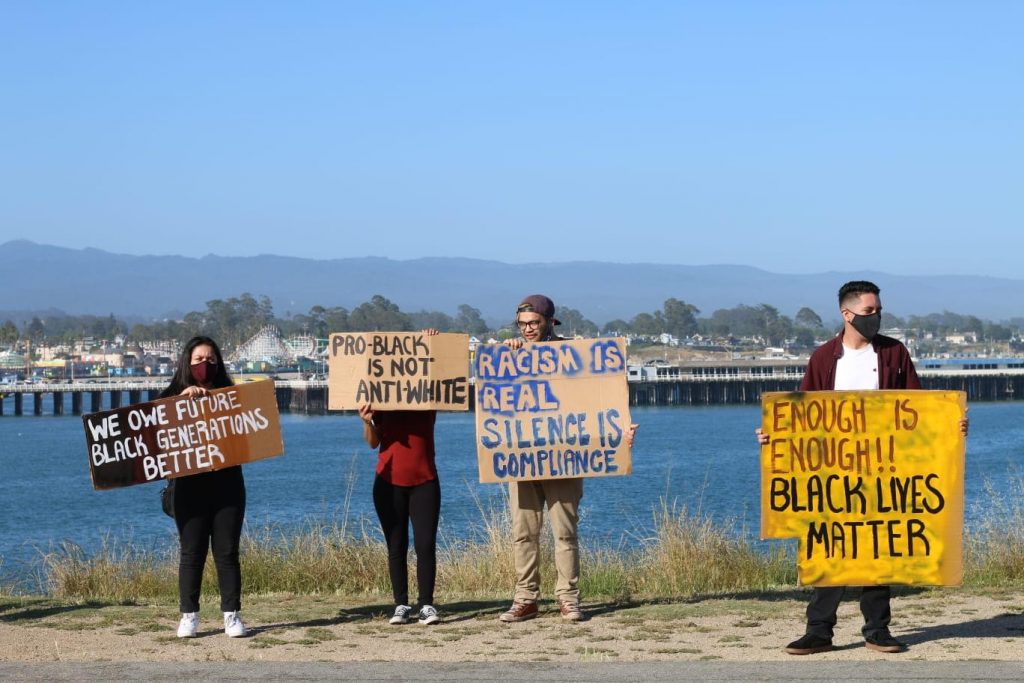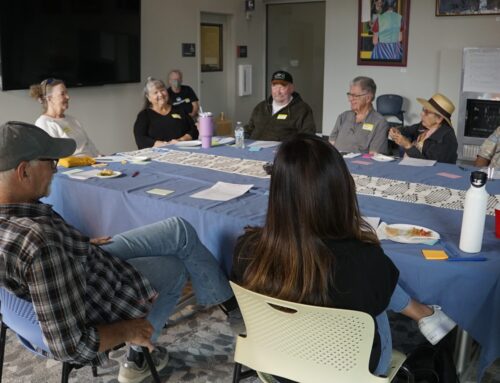They held signs that read “Black Lives Matter” and “Racism is real, silence is compliance.”
Many were angry about the nation’s history of police killings of unarmed black people.
Santa Cruz Local interviewed 20 protesters at Lighthouse Point. Our questions:
- What has been your experience as a person of color in Santa Cruz County?
- How can our community do better for people of color?
- How can our news organization help you? What information or resources do you need?
Santa Cruz resident Jordan Ware, 23, said he feels like “a fly in the milk barn.”
“People are looking at you different,” said Ware, who is black. “To the police, being black or brown makes you a target. People stare at me and when I go out driving, I have a fear that someone’s going to follow me home.”
Errol Hepburn, 27, said until he moved to Santa Cruz, he’d never been called a n—– so many times.
“Just today this guy drives by us and gives us a dirty look,” Hepburn said. “We’re just four black guys driving to Grocery Outlet.”
Hepburn and Ware said they want more news coverage of local police and more data on racial violence and police violence against black people.
Tinina Parker, 46, lives in Santa Cruz and is black. “I’ve experienced more instances of racism here than in any other place I’ve lived,” Parker said.
She said in her experience, people who grow up in Santa Cruz don’t make new friends and tend to have friends who are similar to them.
“People who move here and are new here, it’s tough,” Parker said. “If you’re only interacting with people who are like you, it perpetuates issues. We have to interact with each other more.”
She wants others to “embrace people who are different.” She also wants newsrooms to write stories about local organizations that empower people of color and ask those organizations what kind of support they need.
Santa Cruz resident Liz Patterson, 31, grew up in Texas. “It was a lot more diverse. Moving here, I felt isolated. I struggled. There aren’t too many black people here,” Patterson said.
Patterson said she wants to know more about protests, and wants local newsrooms to reach out to the organizers.
Asha Nidumolu, 26, also grew up in Santa Cruz. Part of her family is Indian.
“I didn’t have brown teachers and friends,” Nidumolu said. She said schools should teach about race and diaspora, and connect students to resources.
“I think Santa Cruz has a specific brand of white liberalism that’s exotifying,” Nidumolu said.
Nidumolu said she received similar comments. “We grew up around that kind of talk about why people were preferring us,” Nidumolu said.
She said she wants “more history that complicates the narrative that this is a lazy surf town — history about the Santa Cruz Mission and colonialism, grounded in indigenous history.”
Protest fallout
After the initial demonstration ended at Lighthouse Point, a smaller crowd gathered at the police station on Center Street. Vandals sprayed the doors, the Santa Cruz Police Department sign, the sidewalk and a courtyard statue with graffiti.
Later, a crowd of about 200 sat around the Town Clock and blocked the streets.
In surrounding blocks, dozens of police stood wearing riot helmets. The Santa Cruz County Sheriff’s Office and California Highway Patrol aided in the response. Santa Cruz Police Chief Andy Mills told Santa Cruz Local that he also requested help from Scotts Valley Police and Capitola Police.
No arrests were made Wednesday night, said Mills.
The crowd dispersed on its own at about 10:45 p.m.
“We facilitated their right to protest. We did so with no force, and that’s what a good police department does,” Mills said.

Natalya Dreszer is Santa Cruz Local's community engagement and business development coordinator.









